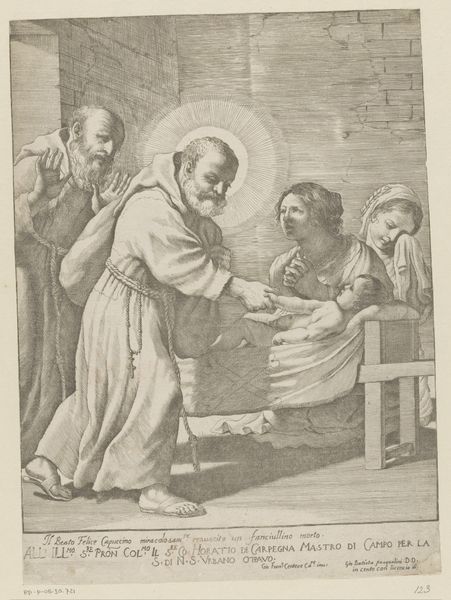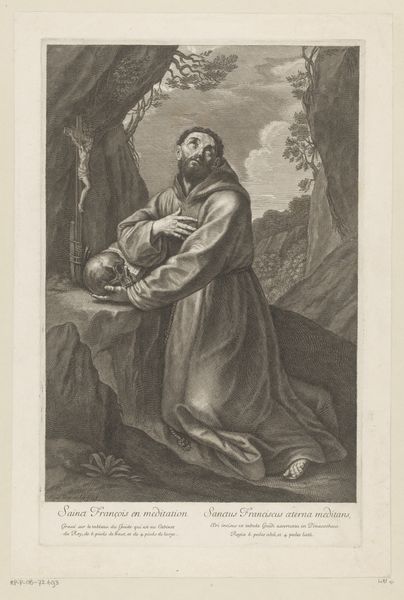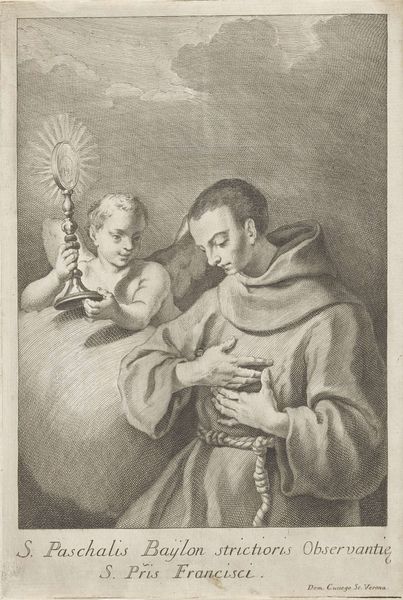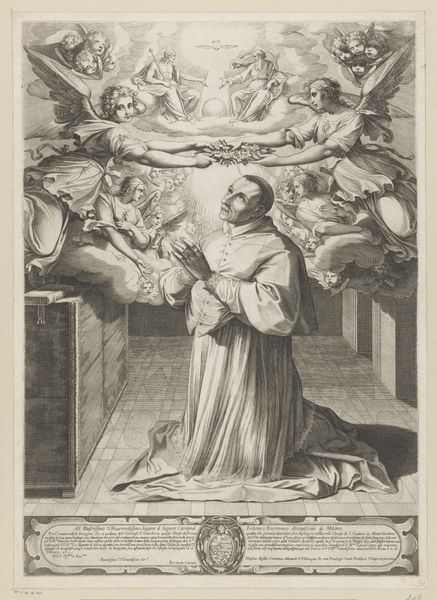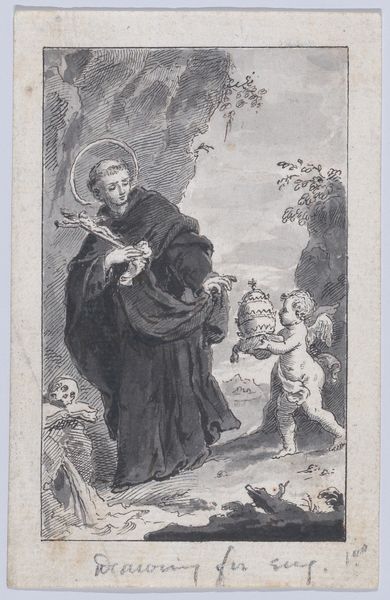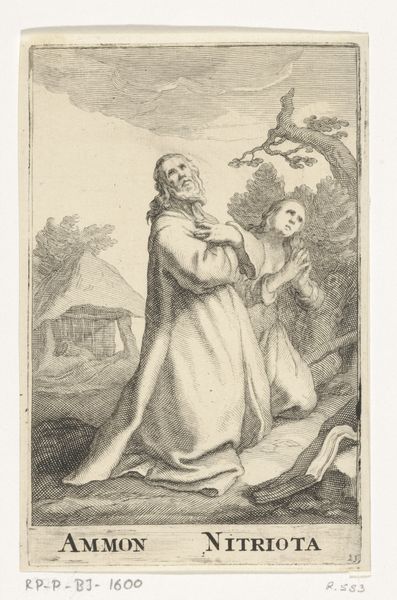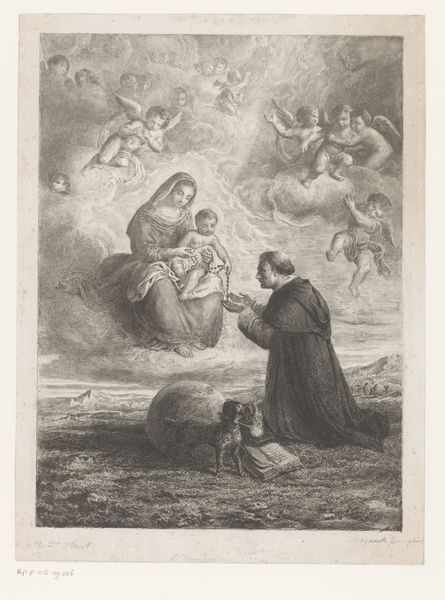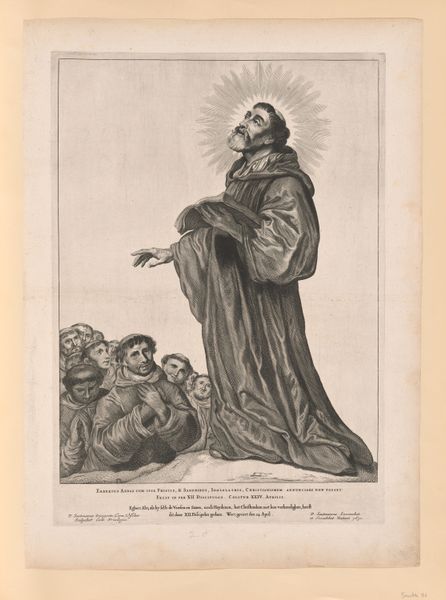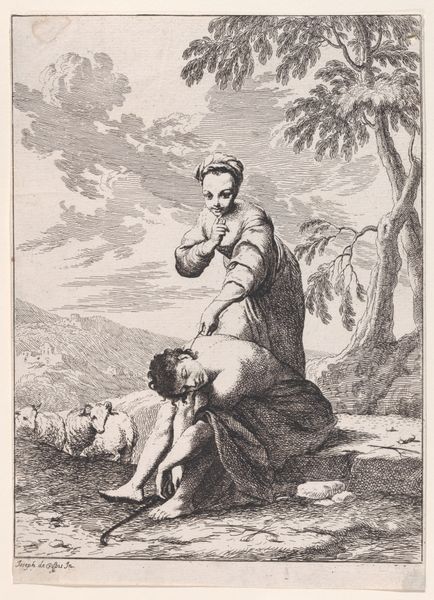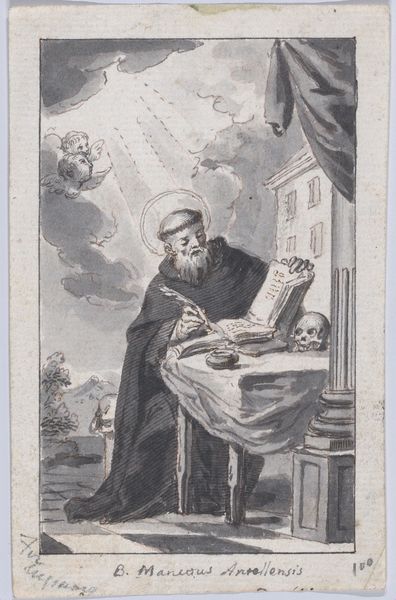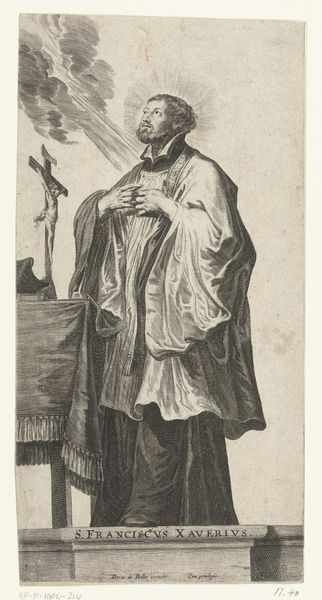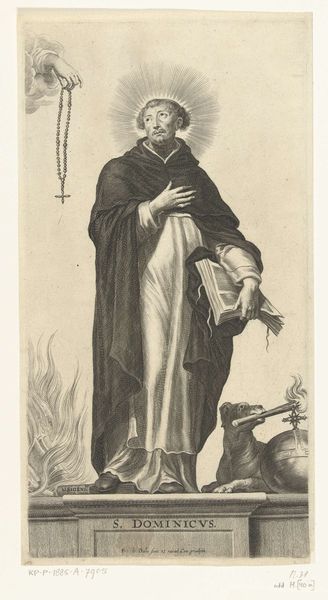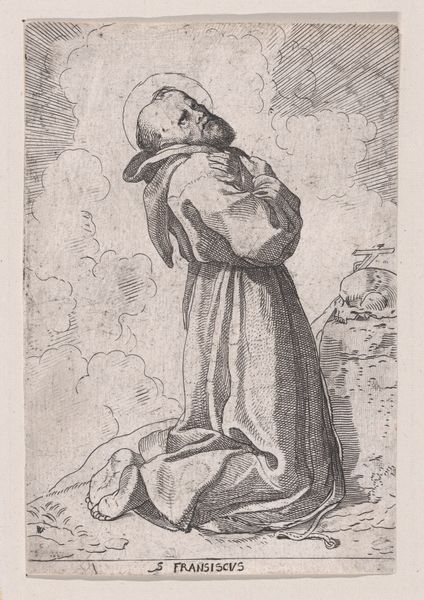
print, engraving
#
portrait
#
baroque
# print
#
old engraving style
#
figuration
#
history-painting
#
engraving
Dimensions: height 157 mm, width 128 mm
Copyright: Rijks Museum: Open Domain
Editor: This print, titled "H. Antonius van Padua," made sometime between 1620 and 1687 by François Collignon, depicts Saint Anthony with the Christ Child. The lines are so delicate. How do you interpret this work through its formal qualities? Curator: Observe how Collignon uses the medium of engraving to create a sense of depth, not through tonal shifts but through varying the density and direction of the lines. The hatching technique creates subtle modeling on the figure of the Saint and the Child, as well as an ethereal background. What impact does the starkness of the contrasting areas of light and shadow have on the work? Editor: The bright, blank scroll, contrasting with the darker areas, almost becomes the focal point. Is this a commentary on written knowledge and faith? Curator: The formal interplay emphasizes not merely the content, but rather directs the eye to the symbolic weight the object holds within the overall structure of the work. Its centrality invites the viewer into contemplation. Is this an iconic depiction, reduced to a single moment, stripped of much narrative content? Editor: It appears so. The composition feels balanced. The positioning of the figures guides the viewer's eye to a full circle throughout the entire print. The linear quality gives it a sense of depth, despite it being a relatively simple figuration. I’ve learned how to see a more nuanced depth with this more focused interpretation. Curator: Yes, exactly. By appreciating the conscious organization of the formal elements, we can decode visual patterns in art.
Comments
No comments
Be the first to comment and join the conversation on the ultimate creative platform.
